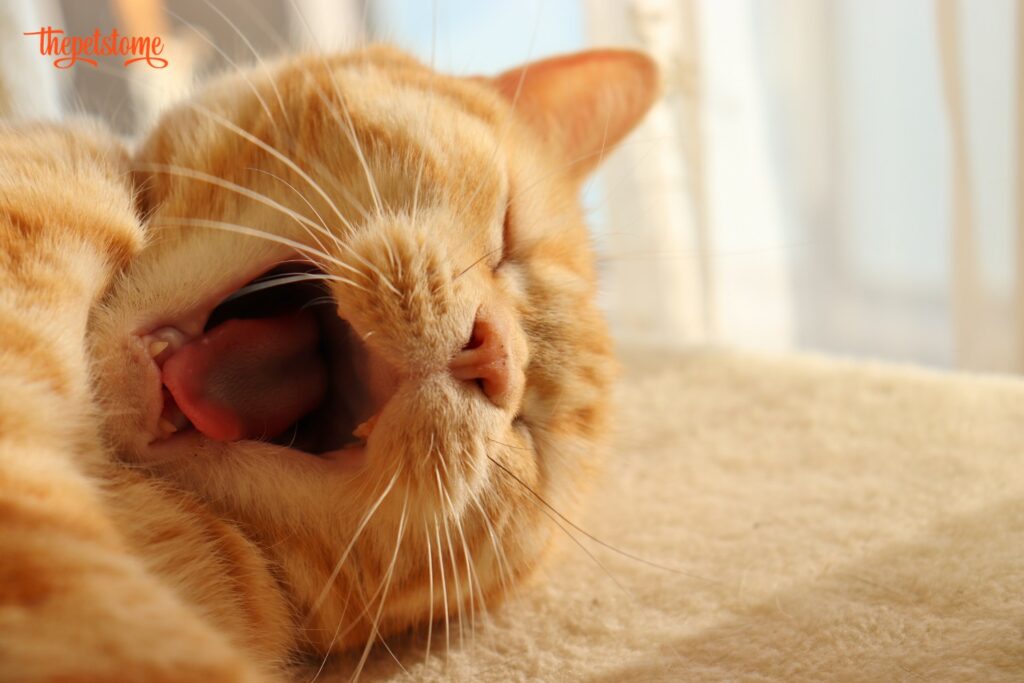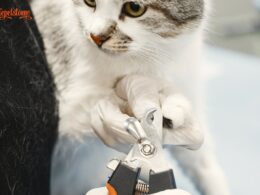Table of Contents Show
As an avid cat parent myself, I’ve spent countless hours observing, cuddling, and just being utterly fascinated by our whiskered companions. And amidst all the purring and playful pounces, there’s one feature that’s continuously caught my attention: those enigmatic whiskers.
Now, while these tactile hairs may seem like a mere aesthetic accessory to some, they play a much more pivotal role in a cat’s life than most of us realize. Are you ready to dive deep into the world of cat whiskers with me?
Together, we’ll unravel 11 intriguing facts about these delicate sensors. Trust me, by the end of this, you’ll view your cat’s whiskers with a newfound appreciation. Let’s get started, shall we?

The Science Behind Whisker Growth
Whiskers, known scientifically as ‘vibrissae’, are far more than just extended hairs; they’re specialized tactile receptors. Let’s delve into the fascinating science behind their growth.
1. Deep Roots
Unlike regular fur, whiskers are rooted much deeper in a cat’s skin. This depth connects them directly to the muscular and nervous systems, making them super sensitive to touch and environmental changes.
2. Growth Cycles
Like all hair, whiskers follow a growth cycle. They grow, rest, and eventually shed to make way for new whiskers. If you ever come across a whisker on your couch or bed, don’t fret; it’s a natural process!
3. Whisker Pads
The prominent regions on a cat’s face where the majority of the whiskers grow are known as whisker pads. These pads contain blood vessels that nourish the whisker follicles, ensuring steady growth and sensitivity.
4. Unique to Each Cat
The length, thickness, and positioning of whiskers vary among cats. Factors like genetics, age, and health can influence whisker growth. In general, a cat’s whiskers are roughly as wide as its body, helping the feline determine if it can fit through tight spaces.
5. Whisker Damage
Though they’re resilient, whiskers can become damaged. Exposure to excessive heat or harmful chemicals can affect their integrity. However, they usually regrow if the base hasn’t been permanently damaged.
6. Sensory Feedback
As whiskers grow, they maintain their connection with the cat’s muscular and nervous systems. This connectivity ensures that even the slightest movement or change in the direction of a whisker sends immediate feedback to the cat’s brain.

11 Weird and Wonderful Facts About Your Cat’s Whiskers
From their agile reflexes to their hypnotic gaze, every feline feature has a tale to tell. But there’s one that often goes unnoticed, despite playing a crucial role in their daily escapades: whiskers.
Now let’s unravel 11 weird and wonderful facts about your cat’s whiskers, shedding light on these unsung heroes of the feline anatomy.
1. Whiskers Aren’t Just On Their Cheeks
When you think of cat whiskers, cheeks probably come to mind first. But our feline friends sport them in more places! Besides the classic cheek location, you’ll find whiskers above their eyes, on their chins, and even on the back of their front legs, known as carpal whiskers.
Each set of whiskers has its unique function, from protecting their eyes to helping them gauge and interact with their environment. So, cats aren’t just flaunting these hairs for style; they’re essential tools in their sensory toolkit!
2. Each Whisker is Sensor-Packed
Cat whiskers aren’t just hairs; they’re finely-tuned sensors. Packed with nerves at their base, they detect minute changes in their surroundings, giving cats a heightened sense of touch and awareness. Think of them as nature’s sophisticated radar system, helping cats navigate their world.
3. Whiskers Help Cats “See” in the Dark
Whiskers act as night vision tools for cats. By picking up air currents and sensing nearby objects, they enable felines to navigate and hunt efficiently in low light or complete darkness. It’s like a tactile flashlight guiding their every move!
4. Whisker Fatigue is Real
Whisker fatigue occurs when a cat’s sensitive whiskers get overwhelmed by constant touch or stimulation, leading to stress or discomfort. It’s essential to give whiskers their space, ensuring they’re not always brushing against objects.
5. Whiskers Can Indicate a Cat’s Mood
The position of a cat’s whiskers reveals its feelings. Forward-pointing whiskers signal curiosity or excitement, while whiskers drawn back suggest fear or irritation. They’re like a feline’s mood ring, reflecting their emotional state!
6. Whiskers Assist in Hunting
Whiskers help cats judge the size and movement of prey, ensuring a successful catch. Acting as precision tools, they gauge gaps and openings, letting cats know if an ambush or chase is feasible.
7. The Root of the Whisker is Deep
The whisker’s root penetrates deep into a cat’s body, serving as a sensitive receptor that provides valuable feedback about their surroundings, helping them react appropriately to stimuli.
8. Cats May Shed Their Whiskers
It’s normal for cats to shed whiskers occasionally, just as they lose fur. However, excessive whisker loss can indicate stress or health problems, so monitor your pet closely.
9. Kitten Whiskers Are Especially Delicate
Kittens have particularly fragile whiskers that should be handled with care. Their sensitivity helps young felines learn and interact with their environment as they grow.
10. Whisker Color Can Change With Age
Just like human hair, a cat’s whiskers can change color as they age, often turning white or gray. This transformation is a normal part of the aging process and not a cause for concern.
11. Whiskers Are Essential Communication Tools
Beyond mood indication, whiskers help in communicating with other cats. The subtle movements of whiskers can convey complex messages during social interactions, enhancing cats’ communication repertoire.

The Maintenance and Care of Whiskers
Ensuring your feline’s whiskers remain in tip-top shape is crucial for their well-being. These sensory marvels may seem self-sustaining, but they can benefit from some consideration and care. Let’s explore how to best maintain and care for your cat’s whiskers:
- No Trimming. First and foremost, never trim, cut, or tamper with your cat’s whiskers. They’re not like fur. Cutting them can disorient your cat, hinder their ability to sense their environment, and even cause distress.
- Mind the Food and Water Bowls: Opt for wide, shallow bowls that don’t compress the whiskers when your cat eats or drinks. Deep bowls can lead to “whisker fatigue” as the whiskers continuously brush against the sides.
- Whisker-Friendly Beds: Just as with food bowls, ensure the resting places or beds aren’t too restrictive, causing your cat’s whiskers to constantly brush against the sides. An open, spacious bed design is preferable.
- Avoid Harsh Chemicals: If you’re cleaning areas your cat frequents, ensure the cleaning products are cat-safe. Harsh chemicals can damage or irritate the sensitive bases of whiskers.
- Check Whiskers Regularly: Make it a habit to gently inspect your cat’s whiskers now and then. Look out for any signs of damage, kinks, or abnormalities.
- Be Gentle: When petting or grooming your cat, be gentle around the whisker area. Avoid tugging or pulling, which can cause discomfort or even pain.
- Understand Whisker Shedding: Don’t panic if you find a whisker on the floor occasionally. Just as with fur, it’s natural for cats to shed whiskers as new ones grow in. However, if you notice excessive shedding, consult with a vet.
- Offer Safe Play Environments: Ensure your cat’s play areas are free from potential hazards that might snag or damage their whiskers, like sharp edges or sticky substances.
Conclusion
Cat whiskers are more than just facial adornments. They’re vital sensory tools, playing a range of roles from mood indicators to hunting aids. Next time you spot those whiskers twitch remember they’re working overtime to help your feline navigate their world.














